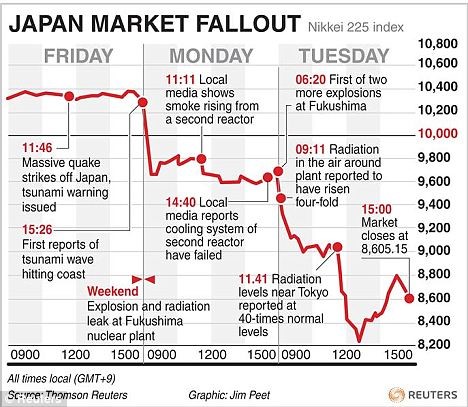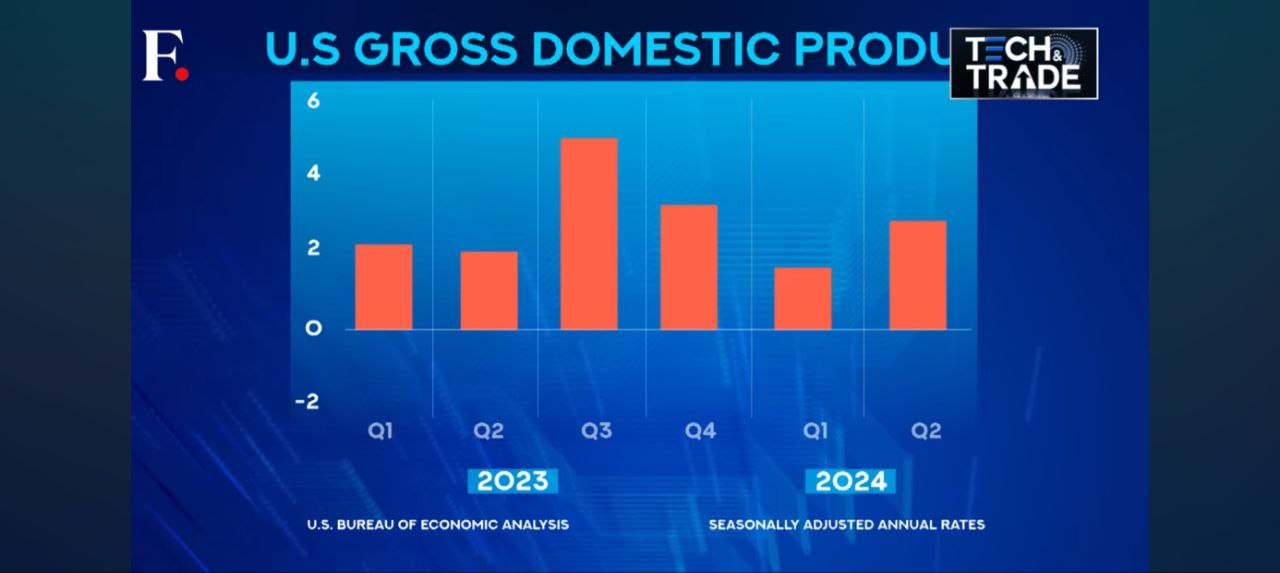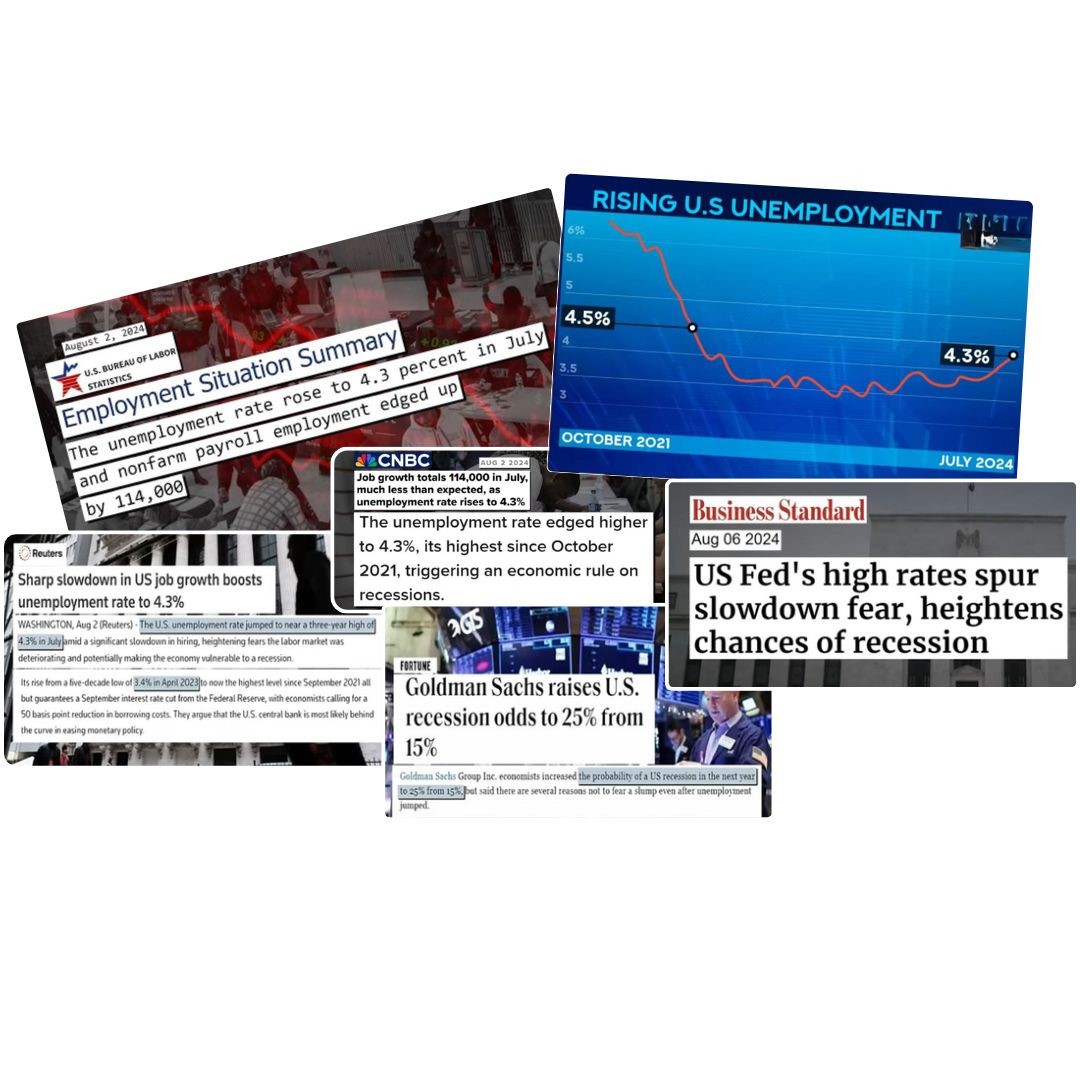Article Explained: Japan’s Stock Market Crash : A Deeper Look
Japan’s Nikkei 225 stock index has suffered its steepest one-day decline in nearly four decades. The Nikkei 225 index fell over 12% in a single day, wiping out its gains for the year.
This downturn follows the Bank of Japan’s recent decision to increase interest rates above zero for the first time since 2007.
The modest 25 basis point hike has sparked a significant selloff, impacting not only the Japanese stock market but also global risk assets.
Why it happened?
This crash was triggered by a combination of factors, including external as well as domestic factors, like a sharp rise in the value of the yen and the Bank of Japan’s decision to raise interest rates above zero for the first time since 2007.
Major reasons for the crash
- Predictions for recession in US economy: US has released its latest unemployment data The unemployment rate jumped to 4.3% in July from 4.1% in the prior month. A weaker than expected U.S. Jobs Data triggered the “SAHM RULE”.
What is SAHM RULE?
“SHAM RULE” monitors unemployment rate to predict recession. The Sahm Rule predicts a recession if the average unemployment rate over three months rises by 0.5 percentage points or more compared to its lowest point in the past year. Essentially, a noticeable increase in unemployment signals a potential recession.
|
- The Federal Reserve interest Rate: At 5.25%-5.50%, Federal Reserve interest rates are at a 23-year high. It was raised to combat inflation which was sky rocketed during COVID-19.
Monetary policy a double edge sword:
A. Inflation Control vs. Economic Growth: · Positive: Raising interest rates can help control inflation by reducing spending and borrowing. · Negative: Higher interest rates can also slow down economic growth and increase unemployment.
B. Stimulating Growth vs. Inflation Risk: · Positive: Lowering interest rates can stimulate economic growth by encouraging spending and investment. · Negative: However, too much stimulation can lead to high inflation, reducing the purchasing power of money.
C. Debt Management: · Positive: Lower interest rates make it cheaper for businesses and consumers to borrow money, which can boost economic activity. · Negative: On the flip side, it can lead to excessive borrowing and higher debt levels, which might become unsustainable in the long run.
D. Market Reactions: ·
· Negative: Unexpected changes in policy can lead to market volatility and uncertainty
|
- Carry Trade: A carry trade is a financial strategy where you borrow money at a low interest rate and invest it in something that offers a higher return. The goal is to profit from the difference between the borrowing cost and the investment return.
The carry trade played a significant role in Japan’s recent stock market crash. Here’s how:
1. Borrowing in Yen: Investors borrowed money in yen at very low interest rates. 2. Investing Abroad: They used this borrowed money to invest in higher-yielding assets outside Japan. 3. Interest Rate Hike: When the Bank of Japan raised interest rates, the cost of borrowing yen increased. 4. Yen Appreciation: The yen’s value surged, making it more expensive to repay yen-denominated loans. 5. Asset Sell-Off: To cover their higher costs, investors sold off their foreign assets, leading to a market downturn.
This sequence of events caused a rapid unwinding of the carry trade, contributing to the stock market crash.
|
- The fear of a wider conflict in West Asia: It has significantly impacted the Japanese stock market by raising oil prices, which increases costs for Japan, causing investor uncertainty and market volatility.
It can also disrupt global trade routes, affecting Japanese exports and imports, and lead to a stronger yen as investors seek safe-haven assets, making Japanese exports more expensive.
- Domestic Factors:
- Weakening Yen: A weaker yen typically boosts Japanese exporters’ profits when converted back to yen, making their stocks more attractive to investors.
- Economic Recovery: Japan’s economy has shown signs of recovery, with improving economic indicators contributing to investor optimism.
- Government Policies: The Japanese government’s policies, including monetary easing and fiscal stimulus, have played a role in supporting the market.
History of Japan’s last biggest crash
The last biggest crash in Japan’s stock market occurred during the early 1990s, known as the Japanese asset price bubble burst. This period saw a dramatic decline in the Nikkei 225 index, which fell from its peak of nearly 39,000 points in December 1989 to around 14,000 points by August 19921.
Causes: The crash was primarily caused by speculative asset bubbles in real estate and stock markets, fuelled by excessive lending and low interest rates. Impact: The burst led to a prolonged period of economic stagnation known as the “Lost Decade,” which actually extended into the 2000s. It resulted in deflation, a banking crisis, and significant losses for investors. Recovery: Japan’s economy struggled to recover, with various government interventions and reforms over the years to stabilize the financial system and stimulate growth. |
Impact on the world and Challenges Ahead:
This crash also affected global markets, including the U.S., as investors worldwide reacted to the news. While the market has been on an upward trajectory, it’s essential to consider potential challenges:
- Global Economic Slowdown: A potential global economic slowdown could impact export-oriented Japanese companies.
- Inflationary Pressures: Rising inflation could erode corporate profits and investor confidence.
- Geopolitical Risks: Escalating geopolitical tensions can create market volatility.
Impact on India
The recent crash in Japan’s stock market has had notable effects on India:
- Market Volatility: The turbulence in Japan’s market led to a global sell-off, causing significant drops in Indian indices. The BSE Sensex fell nearly 2,700 points, and the NSE Nifty dropped about 825 points.
- Investor Sentiment: The crash has shaken investor confidence globally, including in India. This uncertainty can lead to reduced investments and increased market volatility.
- Currency Fluctuations: The yen’s appreciation due to the unwinding of the carry trade has impacted global currency markets, including the Indian rupee, which may face pressure.
- Trade Relations: Japan is a key trading partner for India. Economic instability in Japan can affect bilateral trade, impacting sectors reliant on Japanese imports and exports
Comparison of Japan stock market with Indian stock market
Feature | Japan | India |
Market Maturity | Mature | Emerging |
Economic Growth | Slow and steady | High and volatile |
Demographics | Aging population | Young and growing population |
Investor Focus | Value and dividends | Growth and potential |
Key Sectors | Technology, automotive, finance | IT services, consumer goods, pharmaceuticals |
Valuation | Often undervalued historically, narrowing gap | High growth potential, generally more expensive |
Growth Potential | Moderate, stable | High, with significant upside potential |
Dividend Yield | Typically higher, attractive for income-oriented investors | Lower compared to Japan |
Currency Risk | Yen fluctuations can impact returns | High currency volatility |
Economic Cycles | Less volatile | More volatile due to emerging market status |
Export Orientation | Heavily reliant on exports | Less export-oriented, more focused on domestic consumption |
Regulatory Environment | Relatively straightforward | Complex and evolving |
Risk Profile | Lower volatility, mature governance practices | Higher volatility, developing governance |
The Japanese stock market crash of the early 1990s served as a stark reminder of the dangers of speculative. The burst of the asset price bubble led to Japan’s “Lost Decade,” characterized by prolonged economic stagnation, deflation, and a banking crisis.
The recent crash in the Japanese stock market, with the Nikkei 225 dropping over 12%, has sent shockwaves through global markets. Triggered by fears of a slowing global economy and disappointing U.S. job growth, this downturn underscores the interconnectedness of financial systems and the need for cautious investment strategies during volatile times.







